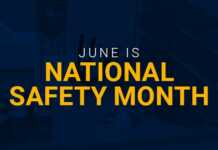Powered industrial trucks (commonly called Forklift trucks) are used in most industries to move heavy and awkward material promptly and safely. Their use reduces the lifting exposure over manual lifting. However, there are risks associated with their use. Some hazards include excessive speed, operating in close confines, working near traffic, pedestrians, and working near loading docks, to name a few. Accidents can occur, even when using best practices. But, knowing some of the typical accident types is knowledge well studied.
Typical accident types
- Crushed by forklift truck tipping over
- Crushed between forklift truck and floor surface
- Crushed between two forklift trucks
- Collision with a forklift truck
- Struck by falling material
- Fall from platform on the forks
Most, if not all, of the above accident types can be prevented. Proper training is key. Training does not mean providing a driver with a pamphlet of instruction or a tool box topic. It is not the same as instructions for assembling a bicycle or making pot roast for dinner. One forgets that a forklift truck, although smaller, weighs as much or more than an average automobile.
OSHA insists that all forklift drivers must be properly trained in stating:
“The employer shall ensure that each powered industrial truck operator is competent to operate a powered industrial truck safely, as demonstrated by successful completion of the training and evaluation specified in this paragraph…prior to permitting an employee to operate a powered industrial truck, (except for training purposes), the employer shall ensure that each operator has successfully completed the training provided…”
“…training shall consist of a combination of formal instruction (e.g. lecture, discussion, interactive computer training, video tape (DVD), written material), practical training (demonstrations performed by the trainer and practical exercises performed by the trainee), and evaluation of the operators performance in the workshop.” 1910.178(l)(1)(i)
Many forklift fatalities occur because the operator jumps from the forklift truck during or in reaction to an accident or event. Instinct is to jump off when a forklift is falling from a loading dock, truck trailer, or other height. Typically, what occurs is that the driver jumps downward and is crushed by the falling forklift. The best practice would dictate that it is far better to stay with the forklift truck even if it tips over. Enforcing a seat belt rule for all forklift drivers is a great preventative measure.
Training can also reduce the severity of the accident. For example, keeping the load as low as possible will increase the vehicle stability by lowering the forklift truck’s center of gravity. Should the driver ignore the safety rule, the severity of any injury while staying forklift is generally less severe.
Training is a continuum. It needs to be ongoing, not just officially every three years, but when conditions such as a change in the type of forklift truck used, changes in operations or conditions, or when unsafe conditions or actions are noted.

















